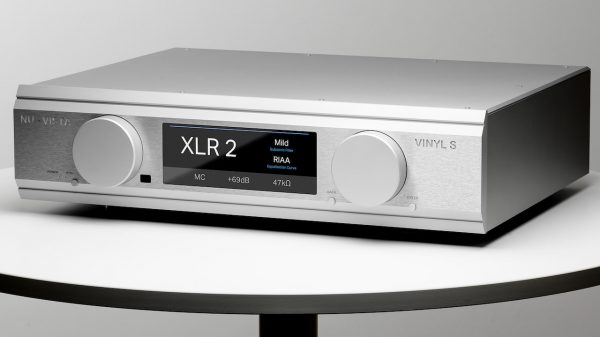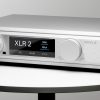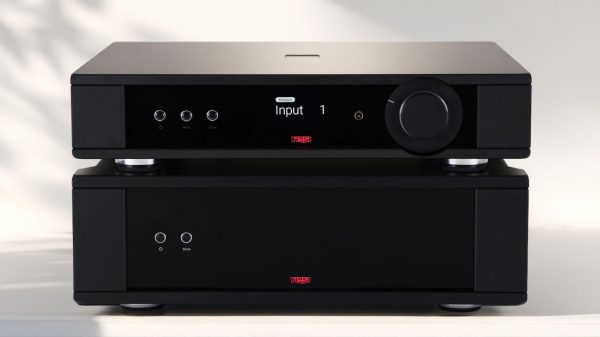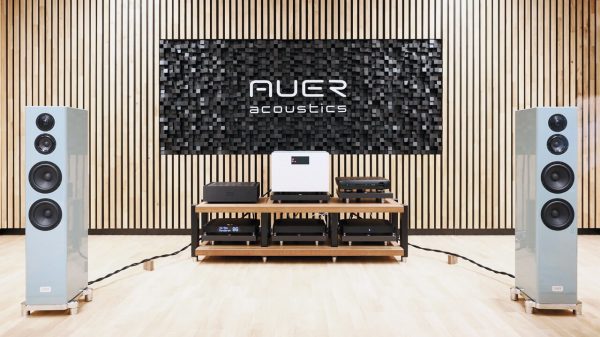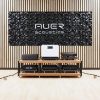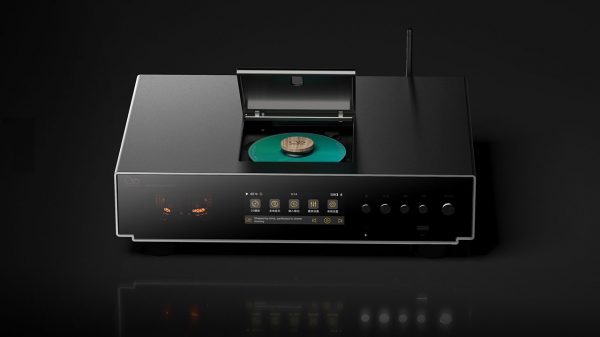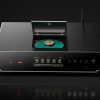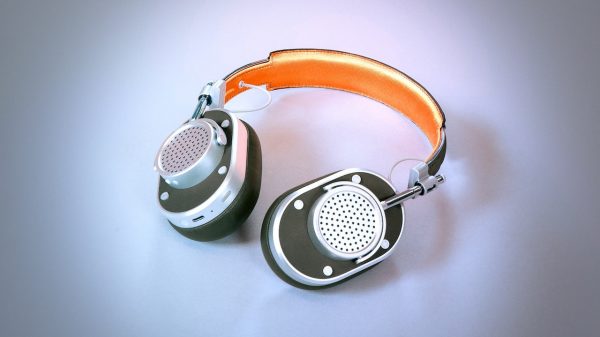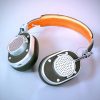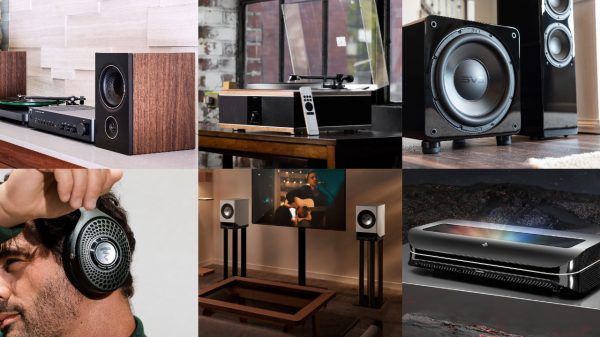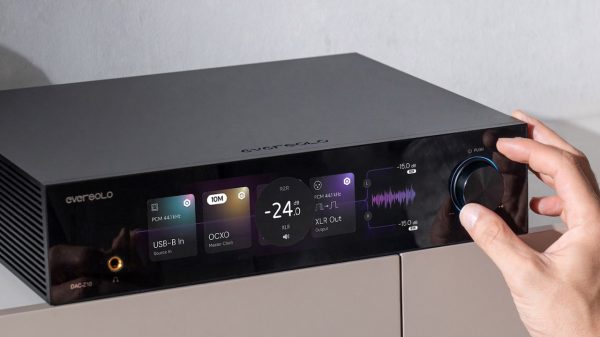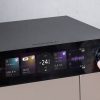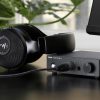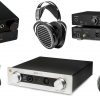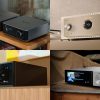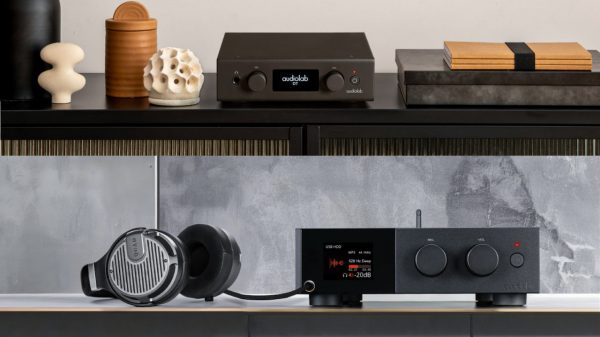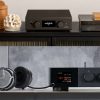Topping’s new D900 isn’t just another DAC/Preamp—it’s a calculated middle finger to convention. Instead of leaning on the usual suspects from AKM or ESS, the Hong Kong-based brand has rolled its own conversion engine, a discrete 1-bit design that promises surgical precision without digital harshness.
The D900 shows a clear engineering focus, built around a fully discrete analog preamp stage paired with its proprietary digital conversion system. It includes a true analog volume control and a flexible EQ section, giving users fine control without leaving the signal path. However, there are no analog inputs, so it’s a closed-loop design—perfect for digital playback, but not something you’d drop into a mixed analog system without a few compromises.
And yes, before “the” leading Hi-Fi publication starts waxing poetic about Topping’s “British heritage,” let’s remember—Hong Kong’s been back under Chinese rule for quite a while now. The engineering team is very much East Asian, not sipping tea in Surrey.
PSRM what?

Topping didn’t just tweak another delta-sigma design and call it innovation—the D900 goes rogue with something it calls PSRM, or Precision Stream Reconstruction Matrix.
Instead of crunching data in multi-bit chunks like your typical off-the-shelf DAC, the D900 fires off a stream of single-bit pulses. The density of those ones and zeros mirrors the shape of the original analog waveform, which then gets massaged back into music through an analog reconstruction filter. It’s nerdy, elegant, and very Topping—engineering over marketing, precision over pretense.
And yes, it’s made in Hong Kong. Not Cambridge. Not Camden. No tweed jackets, no “bespoke British tuning.” Just meticulous digital design from a team that clearly didn’t need a colonial memo to figure out how to build a great DAC.
The Topping D900 accepts an unusually wide range of digital sources, and its proprietary PSRM DAC architecture is equipped to handle nearly every format you’d realistically throw at it.
Over USB, the D900 supports PCM up to 768kHz/32-bit and DSD up to DSD512 (native), or DSD256 via DoP. That’s the input most listeners will use when connecting to a computer, streamer, or dedicated music server, and it’s where you’ll get the DAC’s full-resolution performance—ideal for high-res PCM or native DSD playback.
The I²S input, carried over HDMI, matches the USB specs with PCM 768kHz/32-bit and DSD512 (native) support. It’s aimed at audiophiles using high-end digital transports or streamers that can bypass USB conversion entirely, keeping clock jitter to a minimum.
For more traditional digital gear—like CD transports, network players, or TVs—the coaxial, optical (TOSLINK), and AES/EBU inputs top out at PCM 192kHz/24-bit and DSD64 via DoP. That’s perfectly fine for Red Book CD audio and most hi-res files, even if not as extreme as USB or I²S.
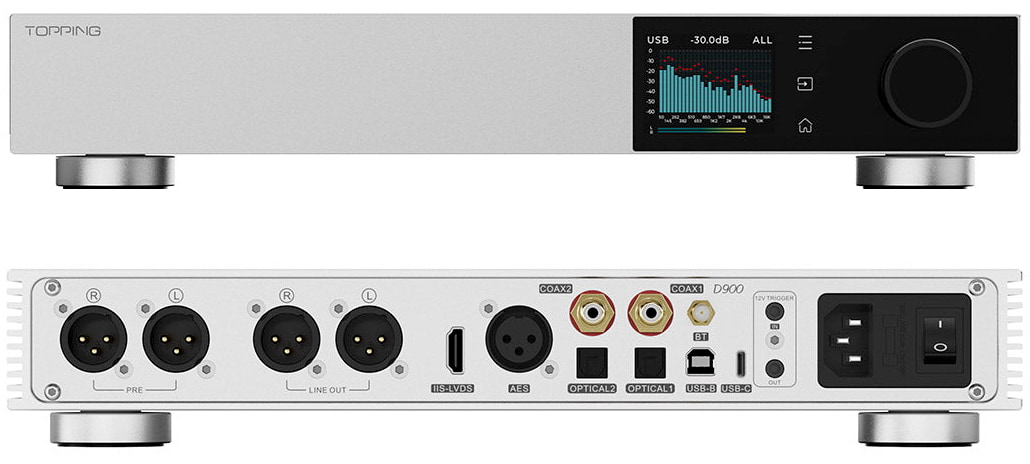
Topping D900 Connectivity: Eight Digital Inputs, Dual Balanced Outputs, and Serious System Flexibility
On the rear panel, the Topping D900 provides eight digital inputs: USB-C and USB-B for computers and mobile devices, two coaxial, two optical (TOSLINK), AES/EBU on XLR, and an HDMI port configured for I²S audio. It’s a practical, well-rounded setup that covers everything from streamers and CD transports to studio gear.
Outputs are handled by two pairs of balanced XLR jacks. One delivers a fixed line-level signal for use with an integrated amplifier or external preamp. The other is variable and routed through the D900’s built-in analog volume control, allowing direct connection to a power amplifier or a pair of active loudspeakers. The layout reflects a straightforward, engineering-first approach typical of Topping’s design philosophy.
There’s no RCA output on the D900, which might perturb anyone planning to connect it directly to active loudspeakers that lack XLR inputs. You’ll need an adapter or XLR-to-RCA cable to make that work. For those using active speakers with balanced inputs—like models from ATC—the D900 can serve as both DAC and preamp with no issue.
There are no RCA inputs on the D900, which limits how it integrates with traditional analog gear. If you plan to add a CD player using its analog outputs or a turntable setup with a phono preamp, you’ll need to use the D900 strictly as a DAC, feeding its output into your integrated amplifier or external preamp. The upside is that your digital streamer can connect directly through the D900’s digital inputs, giving you a single, upgraded DAC stage for all digital sources while keeping your analog chain separate.
The D900 features Bluetooth 5.1 with support for LDAC, aptX Adaptive, aptX HD, and other common codecs. That means you can stream hi-res audio via LDAC from compatible devices, though there’s still no aptX Lossless or Bluetooth LE Audio on board.
It’s a capable setup—good for casual wireless listening or when you don’t feel like stringing up cables—but clearly designed with wired performance as the priority.

Topping D900 Design and Interface: Aurora UI, Aluminum Build, and Thoughtful Control Layout
On the front panel, the Topping D900 features a 2-inch color display running the company’s Aurora UI, with nine color themes and several display modes, including spectrum analyzers and VU meters. It’s more than decoration—it clearly shows bit depth, sample rate, and volume level in real time.
Controls include a mix of touch-sensitive buttons and a rotary dial that can be reassigned for different functions. The included machined aluminum remote matches the main unit’s build quality—no flimsy plastic here.
Physically, the D900 measures 13 inches wide, 2.25 inches tall, and 8.25 inches deep (33.0 × 5.7 × 21.0 cm). The chassis is made from thick aluminum panels with side-mounted heatsink fins and vibration-damping feet. Power consumption is modest—under 10 watts in use and less than 1 watt in standby—and it includes 12V trigger inputs and outputs for integration with other components. The overall design feels solid, professional, and purpose-built rather than decorative.
For those who like to fine-tune their system, the Topping D900 includes a 10-band parametric EQ. Each band’s frequency, gain, and Q (bandwidth) can be adjusted using Topping’s free “Topping Tune” software. Once you’ve built your profiles, they can be stored in the DAC’s internal memory and recalled directly from the front panel—no computer required after setup.
It’s a smart, practical feature that lets you tame room issues, dial in headphone response, or create your own target curve without dragging extra software into the mix.
The Bottom Line
The Topping D900 is available now on Amazon for $1,799, positioning it squarely in the same performance bracket as high-end offerings from Schiit Audio, FiiO, Eversolo, and HoloAudio. What sets it apart is its in-house PSRM 1-bit DAC architecture, true analog preamp stage, and 10-band PEQ—a rare combination at this price. Connectivity is extensive, though the lack of RCA inputs and outputs will frustrate users trying to integrate analog gear or unbalanced active speakers.
Still, for anyone running a fully digital or balanced setup, the D900 offers a compelling mix of engineering transparency, precision tuning, and system-level flexibility. It’s not flashy, it’s not British, and it doesn’t rely on the usual DAC chip suspects—it’s a Hong Kong-built statement piece aimed at listeners who care more about execution than brand mythology.
Where to buy:
Related Reading:



